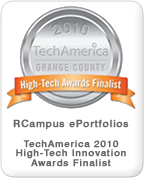Laura Weakland
Reflection
SUMMARY REFLECTION
What I've learned
I have learned a tremendous amount in my journey to technological literacy. Because I am a post-bachelor’s student, I did not experience education the first time using any form of technology, other than the calculator and some basic computer functions. However, I do not feel that this has disadvantaged me. If anything, I feel it has motivated me to learn more. I really enjoy learning new ways of doing things and increasing productivity in everyday tasks. The computer and other technological tools do just that. I have learned how to use many new software programs, as well as other resources on the Internet.
What I still need to accomplish
As I continue to reflect on my technology journey, I realize that I need to do more than just master the “tools” of technology. In order to effectively lead my students I need to continue to look for ways to incorporate technology in my education as well as my future students’ education by looking for ways to use technology to help foster creativity, innovation, communication, collaboration, critical thinking, and problem solving.
What is important if I am going to use technology successfully in my student teaching
When I student teach, it is important for me to discover ways to integrate technology into my teaching plans to enhance learning and to increase my own learning and productivity. I recently read an article entitled “Take a Step Toward Technology” on the Scholastic website (www.scholastic.com) that I thought had some helpful steps for using technology in teaching. I have adapted and modified some of those steps as a plan for how I will successfully use technology in my student teaching as follows:
· Use technology for administrative tasks such as email, grade keeping, assessment, and lesson planning.
· Integrate technology in all content areas by planning and designing learning experiences that are supported by technology and that are linked to content and technology standards.
· Find a buddy by partnering with a mentor teacher who is familiar with the district’s technology tools and policies.
· Use technology to enhance communication with parents through the use of email, a class newsletter and website.
· Support students who learn at different rates by looking for ways to differentiate the uses of technology for student learning.
· Model proper use of technology and teaching students the legal and ethical uses of technology, as well as safe and healthy use.
· Take as much computer training as possible and read resources that support my professional development in technology.
· Use the best resource that's sitting right in front of me, my students, by not being afraid to ask questions and to let the students support me in my learning, as well as theirs!
